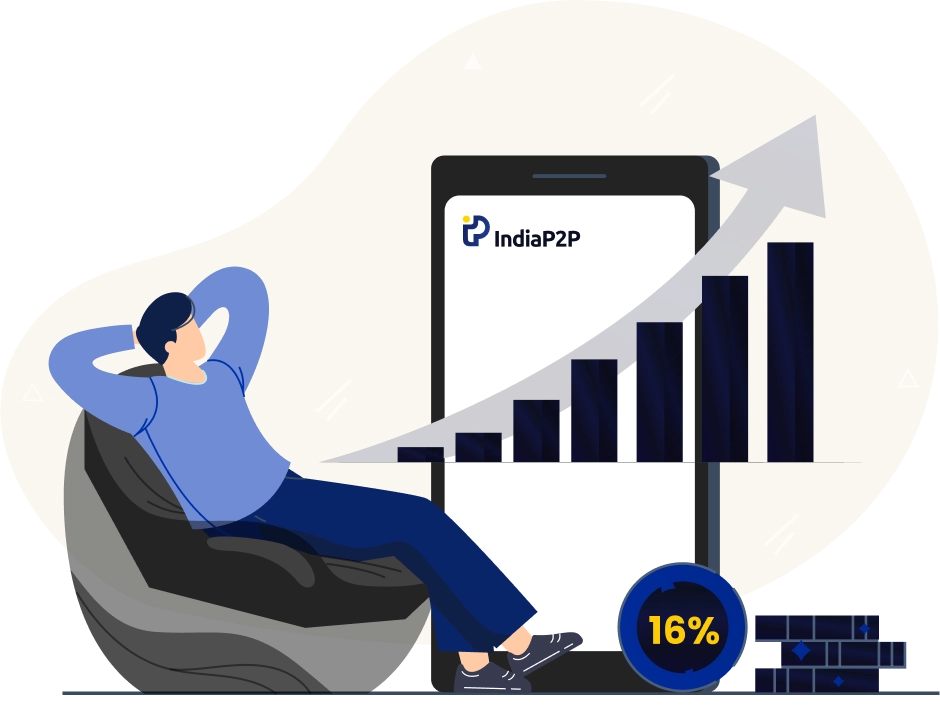Invoice Discounting vs P2P Lending | Know Which One is The Right Option?

In recent times, the idea of alternative investments such as invoice discounting and P2P Lending are catching up as a great investment option for both accredited investors and retail investors. Today, we are going to share with you what is invoice discounting, and what is P2P lending, and how they are different from one another.
So, let’s begin…
What is invoice discounting?
Invoice discounting also known as invoice financing is one of the popular investment options today. It is the type of investment that involves trading unpaid invoices (buying and selling). The whole concept of invoice trading revolves around companies selling unpaid invoices to a third-party “invoice trader” or “factoring company” for a fee. Once this is done, the invoice trader advances a portion of the invoice value to the company (80-90%) and collects the full payment from the customer when the invoice is due.
The basic concept of invoice trading is that it allows investors to purchase unpaid invoices to earn a return when the invoice is paid in full thereby supplementing the working capital needs of the invoice company as opposed to them taking a traditional loan.
What is P2P Lending?
P2P Lending is a marketplace lending concept where the platform provides a medium for lenders and borrowers to connect directly. The platform matches the borrowers with investors who can fund a portion of the loan and earn interest on their investment. This idea is getting popular among investors because of the handsome interest they offer.
You can check out more about How Can One Choose the Right P2P lending Investment Product?
Now that we have understood the basics of both terms, let’s get to the comparison.
Invoice Trading vs P2P Lending
While there are some similarities between P2P lending and invoice trading, like potential for high returns, there are also some significant differences between the two. In this section, we are going to discuss about these differences.
Let’s start with the nature of investment. Invoice trading involves purchasing unpaid invoices whereas, P2P lending involves lending money directly to borrowers. Another difference lies in the tenure of these two investments. Invoice trading offers a fixed-short-term investment on the other hand, P2P lending is typically for longer tenures to match the duration of the loans given out.
This is not it, there is also another major difference between the two - Invoice trading carries the risk of default by the customer of the invoice company or debtor. Usually, the debtor is the company who is obligated to pay the invoice that is being traded. It also carries the risk of the company selling the invoice not fulfilling its obligations properly. On the same note, P2P lending involves the risk of default by the borrower.
A major difference between the two is in terms of regulations and repercussions on the defaulter across these two investment types. While P2P lending is regulated by the Reserve Bank of India (RBI) and only RBI-certified platforms are permitted can operate. On the other hand, invoice financing is not regulated. Platforms offering invoice financing are not required to comply with any dedicated regulations.
This difference in regulation also impacts the potential repercussions on defaulters. In both cases can be filed on defaulters as per applicable laws. However, in case of invoice financing, the defaulter's CIBIL and other credit bureau scores are not impacted, in case of P2P lending every borrower who delays or defaults repayments has their credit score impacted across all credit bureaus active in India.
Let’s summarise all these differences -
- Term or Lending Period - The credit period for invoice trading is usually between 30-90 days and for P2P lending is between 12-24 months.
- Return Structure - Investors in invoice trading usually get return on their investment at the end of the term whereas in P2P lending, the returns are usually paid monthly.
- Risks Involved - In invoice trading, the investor is taking on the risk associated with the invoice’s debtor not the borrower directly like in P2P lending.
- Regulation - P2P Lending is regulated by the RBI and only certified platforms can operate. Invoice discounting does not operate under any specific regulatory regime in India.
You might also find P2P lending vs Gold article.
We hope this article clears a few things for you when it comes to invoice trading and P2P lending. Each one of these investments comes with a set of pros and cons. It is very important to make an informed decision when it comes to investing. Choosing the right investment path can make a huge difference.
Apart from Invoice Trading or P2P lending, there are several other investment routes that you can choose from. Here, we have listed 10 best investments for monthly income in India.




